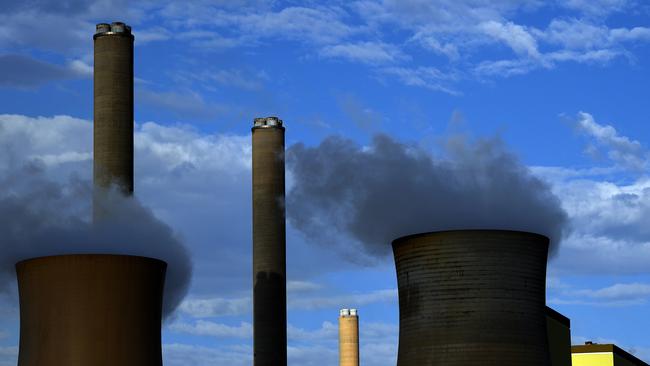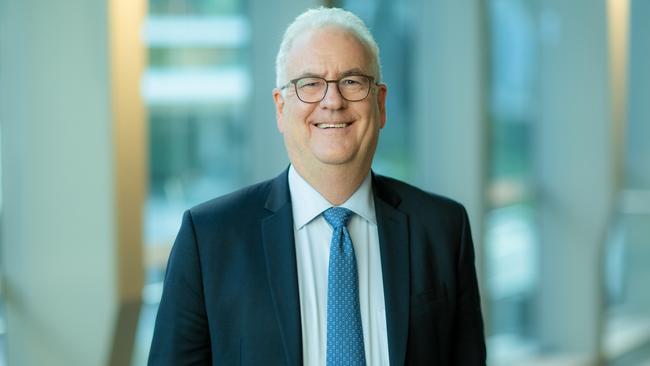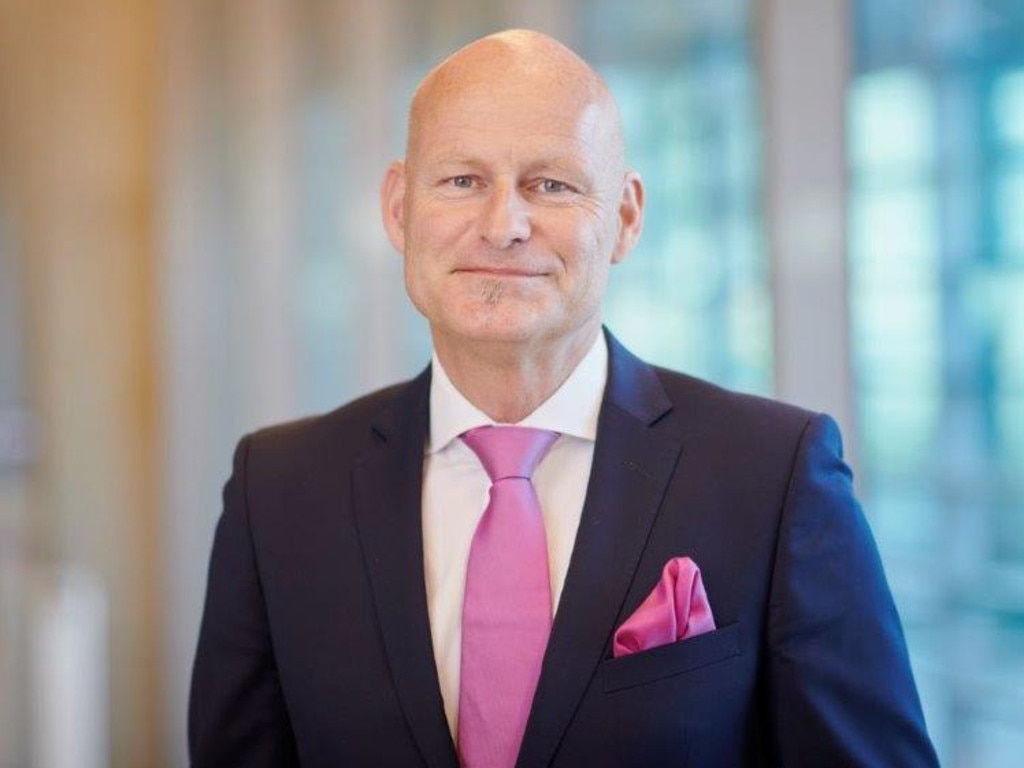AGL Energy warns market conditions may spur faster exit from coal
AGL Energy has conceded it may accelerate closure dates for two of Australia’s biggest coal plants again depending on market conditions.

AGL Energy has conceded it may accelerate closure dates for two of Australia’s biggest coal plants again depending on market conditions, underlining the speed of cheap renewables undercutting coal and raising fears of a bumpy transition as the fossil fuel exits the grid.
The 180-year-old power giant announced on Thursday a plan to close the doors of the Bayswater coal plant in NSW’s Hunter Valley up to five years early, by 2030, while Victoria’s Loy Yang A facility faces the axe from 2040, instead of its earlier expected retirement in 2048.
AGL chief executive Graeme Hunt revealed those dates could come forward again, implying closures in the 2020s for Bayswater and 2030s for Loy Yang A, as solar and wind rout the economics of baseload coal.
“It’s possible that those dates might come forward, but that depends on what happens in the rest of the system,” Mr Hunt told The Australian after releasing AGL’s half-year results on Thursday.
“We’re putting our operating plans and our budgets together on the basis of the back end of those time windows. But we will re-do that year in, year out and inform the market as to what our thinking is as we go. There are clearly a range of views.”
Coal, which provides up to 70 per cent of current electricity capacity, could be entirely shut as early as 2040 under a plan by the Australian Energy Market Operator, which runs the power grid.
That is up to a decade earlier than current scheduled retirement dates outlined by plant owners, and Mr Hunt said significant investment would be needed to replace the lost capacity that had been factored into its broader demerger plan set to take place in the June quarter.
“There’s a lot of investment involved and it would need to be balanced across the needs of each individual state as well,’’ he said.
Both Bayswater and Loy Yang A are the victims of a fast-paced move to renewable supply and a realisation that the most polluting fossil fuel must be phased out of the energy system sooner than planned to meet climate goals.
Still, Mr Hunt admitted that both the company and its workers had been surprised by the pace of the energy transition, which has at times rendered coal uncompetitive with other supply sources.
But he said the company was committed to replacing it with new generation.

“The general community is expecting that coal exits from electricity generation earlier than anyone might have thought a few years ago,’’ Mr Hunt said. “But as we repurpose the coal sites, it’s not our intention to wait and start doing new things there when we’re at five minutes to midnight around the closures.
“We are starting those things and progressing those things now.’’
AGL’s planned offshoot, Accel Energy, plans to develop Loy Yang, Bayswater and Torrens Island into major energy hubs spanning hydrogen through to batteries.
It also revealed it was in talks with partners to establish a fund called the Energy Transition Investment Partnership, aimed at supporting Accel in funding low-carbon developments with a 2700 megawatt pipeline of projects included in the scheme.
Accel would manage the fund known as ETIP in addition to handling development, output marketing, construction, asset and dispatch functions.
AGL has given ample warning of its plans, but Energy Minister Angus Taylor said the loss of 5000 megawatts of supply – or roughly 8 per cent of generation in the national electricity market – was cause for concern.
The “exit of such a considerable amount of reliable generation is a concern for the continued reliability and affordability of the system,” Mr Taylor said.
“Delivery of new, timely, replacement dispatchable capacity will be critical in keeping prices low and the lights on.”
Bayswater produces enough power for 2 million households and, combined with AGL’s Liddell station (which is set to close next summer), supplies 35 per cent of NSW power.
Loy Yang A generates 30 per cent of Victoria’s power requirements and its coal mine also supplies Loy Yang B, owned by Alinta and set to close in 2047.
AGL’s interim profit dived amid low power prices, although it upgraded its annual earnings guidance due to a stronger trading and generation performance and amid a recovery in wholesale prices.
Its underlying profit after tax fell 41 per cent to $194m, while its dividend was slashed to 16c, from 41c, underscoring the tough conditions that in part pushed the power giant to forge ahead with a demerger.
However, the outlook for the 2022 financial year looks brighter.
Underlying earnings are expected to be between $1.275bn and $1.4bn, compared with previous guidance of $1.2bn-$1.4bn. Underlying net profit are expected to be between $260m and $340m, from a prior forecast of $220m-$340m.
The company’s shares hit a 20-year low of $5.10 in November amid rock bottom power prices and an uncertain earnings outlook.
However, a bounce in wholesale prices in January has seen AGL shares rebound by 48 per cent, handing it a stronger platform as it seeks to lock in a historic demerger of its business later this year. AGL fell 3.2 per cent to $7.29 on Thursday.
Volatile market conditions in the past few years have routed profits for some of the industry’s biggest names and piled pressure on AGL’s coal-heavy generation portfolio, forcing it to split the company in two amid pressure from investors to act.
Mr Hunt, its former chairman who took the helm in July last year, will head up its coal-dominated generation arm known as Accel should the split of the company go ahead.
AGL Australia, a green-focused energy retailer, will be led by AGL’s current chief customer officer Christine Corbett, with a shareholder vote on the split set to take place in the June quarter.
Emissions from Accel’s electricity generation assets will be reduced by a further 90 million tonnes over the period 2023 to 2050, compared to modelled outcomes of its previous commitments.
With Liddell scheduled to close by April next year, Accel will deliver a reduction in annual emissions of 18-27 per cent between 2025 and 2034, and by 55-60 per cent in annual emissions between 2035 to 2046 compared to a 2019 baseline.





To join the conversation, please log in. Don't have an account? Register
Join the conversation, you are commenting as Logout